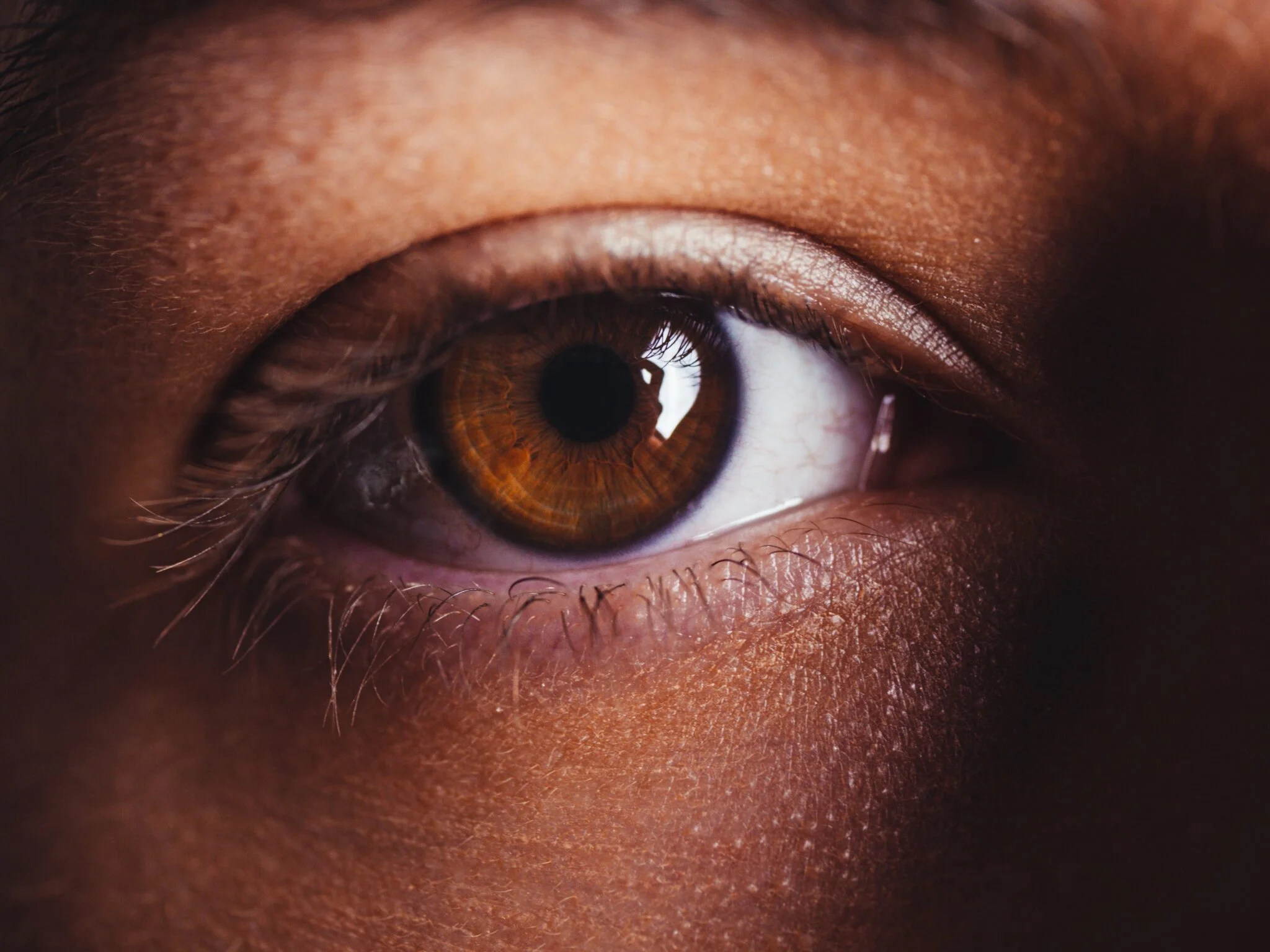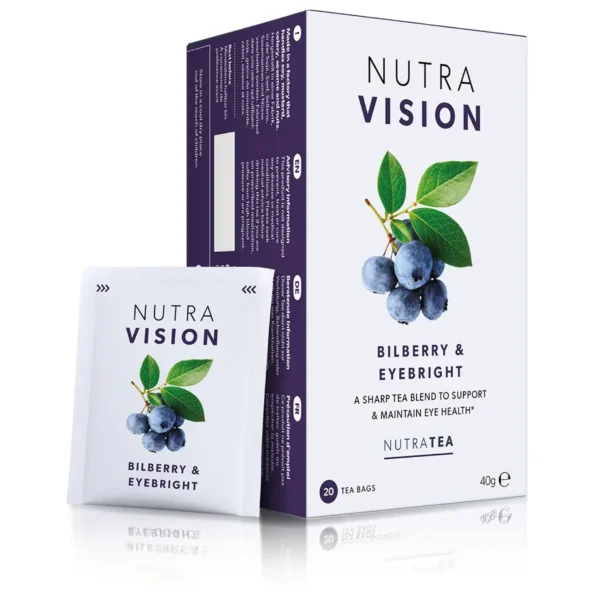NutraBlog
What Is Eyebright?

This humble-looking herb gets its name from its traditional use as a remedy for eye issues, but what is eyebright? And what are the benefits of using it in herbal teas?
—
Walk over heathland or around limestone outcrops in the UK and you might well spot some delicate white flowers dotted through the grass. Eyebright’s flowers may be tiny, but they are also beautiful to look at, with their purple-veined white petals and bright yellow spots.
Like many humble wild plants, there’s more to eyebright than you might first think. This plant has been used for centuries to treat eye issues, including redness, irritation, conjunctivitis, and inflammation of the blood vessels.
Even today, eyebright is used by herbalists and natural health enthusiasts as an alternative to over-the-counter eyedrops. As well as treating eye issues, the herb is believed to boost circulation to the eyes, meaning it may help our general eye health too.
Read on to find out more about eyebright and how it became known as a cure-all for the eyes.
Eyebright: Growth and History
Eyebright is native to many parts of Europe, including the UK. It thrives in poor soils, and you’ll often find it growing in chalk and limestone areas where the soil is too thin or nutrient-poor to support many other species.
Part of eyebright’s success in poorer soil conditions comes from its ability to form a semi-parasitic connection with the roots of other plants, such as grasses. The eyebright can then steal some of the nutrients from the other plant, helping it succeed even in challenging growing situations.
Eyebright is also found in North America and parts of Asia. Its Latin name is Euphrasia officinalis, but it’s also known as Luminet, Christ’s Eyes, Christ’s Sight, Bird’s Eye, and Fairy Flax. Many of these names refer both to the appearance of its flowers and their use in treating eye conditions.
Although the plant itself can grow to as high as 20 cm (in the right conditions), eyebright’s flowers are fairly small – just 5-10 mm in size. They appear between May and September and are the main part used in herbal remedies, although the leaf and stem may also be used.
The plant’s association with eyesight starts early in history. Greek mythology tells us that the linnet was the first to recognise that eyebright could be used to treat eye conditions. The story goes that the bird gave leaves from the plant to its chicks, clearing their eyesight. The linnet then shared this knowledge with humans.
The famous herbalist, Nicholas Culpepper, also wrote about eyebright in the 17th century, arguing that if everyone used it daily, it would soon put half the spectacle makers out of business.
In the Elizabethan era, it became popular to make ale that included eyebright, allegedly to clear the vision, although the effects presumably depended on not overdoing it.
This herb even turns up in Milton’s Paradise Lost, where it is used to clear Adam’s eye after he eats the fruit from the tree in the Garden of Eden.
Eyebright’s association with the eyes also comes from a philosophy called the doctrine of signatures. This theory argues that God (or gods, depending on your worldview) had marked plants in a way that would allow humans to figure out their use. Essentially, if a plant looks a bit like a body part or organ, the doctrine of signatures suggested it could be used as a cure for that part.
This theory seems to have developed in most cultures around the world, including in Western herbalism.
It might take a little imagination, but the flowers of the eyebright can seem to resemble the human eye because of their white petals, darker veins, and black centres.
While the doctrine of signatures led to some fatal mistakes, there are times when it seems to have held true. Eyebright might be one example.
What is Eyebright Used For?
Although it may have fallen out of favour with the medical establishment, eyebright is still commonly used by herbalists and homoeopaths to treat eye conditions, including conjunctivitis, styes, and eye irritation.
More recently, as our world becomes ever more digital, eyebright has also become a popular herbal remedy for eye strain caused by too much time looking at screens.
Scientific studies into this herb are limited, but those that do exist tend to support eyebright’s effectiveness for boosting our eye health. It has shown promise in treating eye inflammation, relieving redness in the eyes of newborn babies, and fighting off the microbes that commonly cause eye infections.
Eyebright’s ability to treat eye conditions and improve our eye health appears to come from a combination of its high antioxidant content and its antimicrobial properties.
Although it’s mainly linked to healthy eyes and vision, eyebright does have other traditional uses. These include:
- Relieving the symptoms of seasonal allergies, including hay fever
- Soothing coughs, congested sinuses, and other symptoms of the common cold
- Protecting skin from sun damage
Is Eyebright Safe?
When it comes to our vision and eyes, eyebright is commonly used in two main ways. It can either be ingested orally, or it can be applied topically as eyedrops, an eye rinse, or a compress laid over the eyes.
Taken orally, eyebright is safe for most people. There’s a small chance that it might lower your blood pressure, so consult a doctor first if you have diabetes. You should also speak to your doctor before taking any herbal remedy if you are on medication or have any medical conditions.
Sadly, there’s currently no data about whether eyebright is safe during pregnancy or breastfeeding. To be on the safe side, you may want to avoid it if either situation applies to you.
We also advise against applying eyebright directly to your eyes. This may cause irritation, especially if you are using a homemade rinse, which won’t be properly sterile and may lead to an eye infection.
If you do decide to use eyebright in your eyes, look for properly prepared and sterilised eyedrops, not homemade rinses or drops.
How Should You Take Eyebright?
The safest way to take eyebright is orally. This is a traditional approach too – eyebright is commonly made into a tea. We suggest doing this instead of trying the Elizabethan method of drinking eyebright ale!
Eyebright tea can be drunk every day. You can find loose leaf teas, but the easiest way to make it is to use a tea bag. Simply place the tea bag in your favourite mug, pour over freshly boiled water, and leave to brew for 4-5 minutes.
We also like to combine eyebright with other herbs that support eye health and good vision. That’s how we came up with our NutraVision blend, which includes eyebright, bilberries, green tea, kiwi, and orange pepper.
Packed full of antioxidants, this tea is designed to support good blood flow to the eyes and aims to help your eyes stay healthy, even with the demands of today’s digital world.

